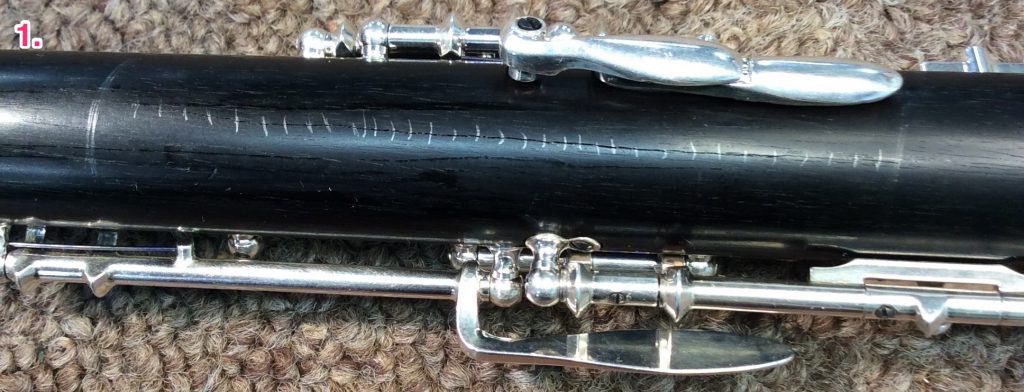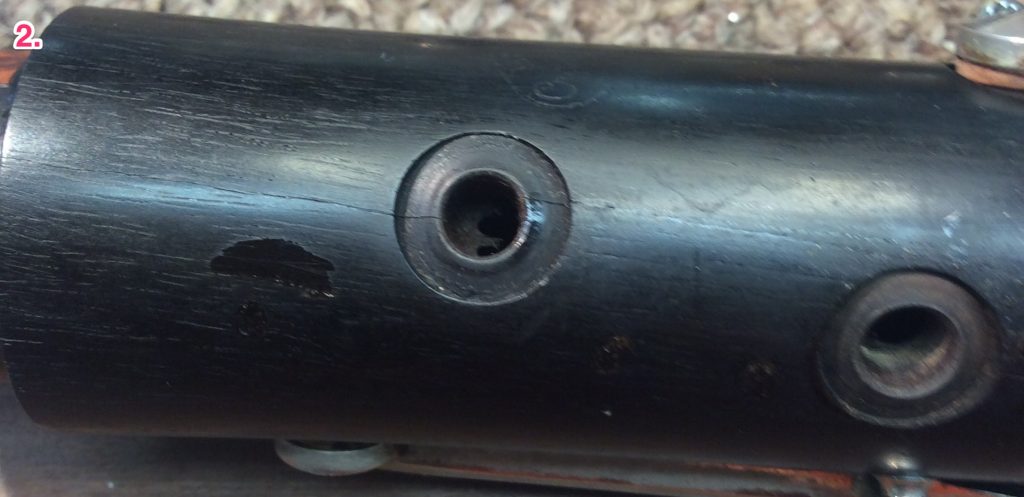Post 53: What does “My oboe keeps going out of adjustment!” mean?
We hear clients say this statement all the time, “My oboe keeps going out of adjustment!” Oboes are extremely finicky, but one thing is certain, they do not go out of adjustment “just because” or “on their own.” There is always a reason why an oboe might go out of adjustment! We wanted to share a few of those reasons with you so you can be better equipped to resolve an issue, or at least diagnose an issue, in the future.
- Extremely loose mechanism, key wobbles on rod or pivot screws
- Loose adjustment screw in screw housing
- Worn out adjustment cork, either broken or deep indention
- Adjustment corks that are too thick and “squishy”
- Pads not covering properly
- Pads with deep indentions
- Wobbly tenon connections
As you can see from this list there are many things that can make adjustments on an oboe become unstable, i.e. keep going out of adjustment. There is one word that can tie all of these items together, solid. Oboe mechanisms are complicated and oboe mechanisms have a lot of moving parts. Because of this, oboe mechanisms have to be solid in order to give you the performance you demand.
One of the first things many oboe players think of is expansion and contraction of the oboe material. All oboes, whether they are made out of wood or a synthetic material, expand and contract. This material movement can cause oboe mechanisms to change, making the oboe go out of adjustment. Typically this change is very minor and subtle, sometimes noticeable and sometimes not. Sometimes this change results in keys binding, which is very noticeable due to the fact that the keys stop working properly.
In our experience, MOST of the time when someone says “My oboe keeps going out of adjustment!” it is a culmination of all the possibilities listed above. All of the possibilities above happen slowly over time as you play your oboe. We call this ‘normal wear and tear’.
The metal that oboe keys and rods are made from do wear out over time. When this happens, keys become less accurate which causes them to wobble in place instead of pivot in place. The wobbling movement will cause pads to not cover properly and make adjusting with other keys nearly impossible. Loose, wobbly keys will cause the adjustments on your oboe to be unstable.
Adjustment screws have to be secure in their adjustment screw housings. If they’re not, they will move! Over time, screws can become loose on your oboe and when they do, they can turn by themselves from the vibrations and movements of playing the oboe. They can also turn from assembly, disassembly and by being carried around in its case. If the adjustment screws on your oboe are not secure, your adjustments will be unstable.
Pads and tone holes need to be flat! Once a pad starts to show wear, it can become warped and/or take on a deep impression of the tone hole. Anytime these changes occur, the regulation or adjustments between two or more keys becomes unstable.
On most oboes, there’s material under the adjustment screws that is glued to the key beneath the adjustment screw. This material is typically called the adjustment cork. This material could be cork, leather or synthetic. No matter what the material is, it has to be thin and solid. This cork cannot be squishy, it cannot have a deep indention, and it cannot be broken. If these corks are not solid, your adjustments will be unstable.
When you assemble your oboe the tenon joints have to be secure. If the joints of your oboe wobble after being assembled, this can have a drastic effect on the stability of the bridge key connections. If the bridge key connections are not accurate, the adjustments between the two joints will be unstable.
“My oboe keeps going out of adjustment!” is a simple, general statement of truth when you are having trouble playing your oboe. The solution to this frustration is also simple in principle. Pads, corks, tenons and keys have to be solid in their mechanical function. Just like players have to maintain a consistent practice regimen to become a solid oboist, the oboe itself has to have consistent maintenance to remain mechanically solid.
If you have concerns about your oboe “going out of adjustment,” call or email the solidly unstable staff at Onks Woodwind. We would be honored to serve you!
615-223-9015
Blessings, Jason Onks



